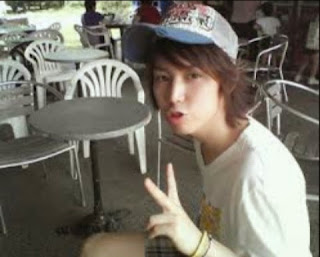my last posts already discussed about special particles (은/는) and form particles (이/가, 을/를, 에/에서, 의, 와/과, (으)로, (이)랑, 하고, 한테, 에게서,께, 한테서 and 에게서).
but do you know what are the differences between these particles? the first difference is the usefulness of the particles. form particles are to declare the role of the noun that be paired of, while the usefulness of special particles are to add the special meaning like 'also', 'even' and 'only' or to declare whether the noun that be paired of is the topic of the statement or not.
The 2nd difference is the position of the particles. Form particles can only appear after the nouns (subject, object, indirect object, etc), While special particles can appear in the place where particles form appear and in the adverbs such as 빨리(fast) and 싸게 (cheap).
Example: - FTISLAND가 한국에 있어요 = FTISLAND are in Korea
- FTISLAND는 한국에 있어요 = FTISLAND are in Korea
- 재진이 노래를 불러요 = Jaejin is singing a song
- 재진이 노래는 불러요 = Jaejin is singing a song
- 그 식당이 음식을 빨리는 줘요= That restaurant serves food quickly
dizzy huh? well well.. let',s just continue to our main lesson! kkk
1. Special Particle 만
This particle adds a meaning of a statement with 'only' in the nouns that be paired of. This particle appear in place where 이/가 or 을/를 appear as a replacement word. And can also appear in place where particles form appear to give an additional meaning.
Example: - 만환이 영어를 공부해요 = Minhwan learns English
- 민환만 영어를 공부해요 = There's only Minhwan who learns English
- 민한이 영어만 공부해요 = Minhwan only learns English
- 승현이 월요일에만 금요일까지 학교에 가요 = Seunghyun goes to school only on Monday till Friday
- 승현이 월요일에 금요일까지 학교에만 가요 = On Monday till Friday, Seunghyun only goes to school
- 빨리 오세요! = Come here quickly!
- 빨리만 오세요! = Just come here quickly!
2. Special Particle 도
This particle adds meaning of a statement by 'also', 'along with' and 'even' in the nouns that be paired of. This particle appear in the places like 만.
Example: - 민환도 영어를 공부해요 = Minhwan also learns English
- 민환이 영어도 공부해요 = Minhwan even learns English
- 승현이 토요일에도 학교에 가요 = Seunghyun also goes to school in Saturday
- 승현이 토요일에 학교에도 가요 = Seunghyun even goes to school in Saturday
- 음식도 많은 있어요 = There's plenty of food too














